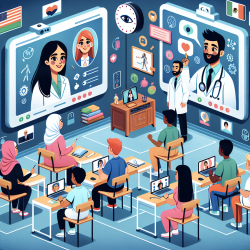Unlocking the Potential of Digital Monitoring in Alzheimer's Care
The advent of digital monitoring technologies has opened new doors in the management of Alzheimer's disease, providing a wealth of data that can inform and enhance patient care. A recent study, "Long-term digital device-enabled monitoring of functional status: Implications for management of persons with Alzheimer's disease," highlights the transformative potential of using digital devices to monitor functional status in individuals with Alzheimer's.
Understanding the Study
The study conducted by Manley et al. involved long-term monitoring of physical activity (PA) and lifespace (LS) using digital devices such as smartphones and smartwatches. The research focused on two caregiver/care-recipient dyads, collecting over 42,800 PA data points and more than 154,500 LS data points over 15 months. This extensive data collection provided insights into the day-to-day functioning of persons with dementia (PWD) and the role of caregivers in structuring their daily lives.
Key Findings
- Caregiver Influence: The study demonstrated that caregivers significantly influence the PA and LS of PWD, highlighting the importance of caregiver involvement in daily routines.
- Data-Driven Insights: The use of digital devices allowed for the collection of high-resolution data, offering a detailed view of daily activities and changes over time.
- Potential for Early Intervention: By identifying patterns in PA and LS, caregivers and clinicians can detect early signs of functional decline, allowing for timely interventions.
Implications for Practitioners
For practitioners, the study underscores the importance of integrating digital monitoring into dementia care. By leveraging these technologies, practitioners can:
- Enhance patient-centered care by tailoring interventions based on individual data.
- Improve communication with caregivers by providing objective data to support clinical decisions.
- Identify early warning signs of functional decline, enabling proactive care strategies.
Encouraging Further Research
The study also opens avenues for further research, suggesting that future studies should explore:
- Integrating Geographic Information Systems (GIS) with LS data to understand environmental influences on patient activities.
- Developing evidence-based support strategies for care dyads based on activity patterns.
- Creating algorithms to detect tipping points for early intervention in functional decline.
Conclusion
Digital device-enabled monitoring represents a significant advancement in Alzheimer's care, offering a data-driven approach to understanding and managing the disease. By embracing these technologies, practitioners can enhance the quality of care for individuals with Alzheimer's and their caregivers, ultimately improving outcomes and quality of life.
To read the original research paper, please follow this link: Long-term digital device-enabled monitoring of functional status: Implications for management of persons with Alzheimer's disease.










